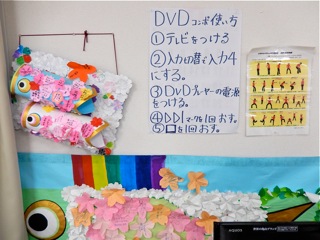Volunteering for Happy Hearts
- At July 27, 2016
- By anneblog
- In Annes Letters
 0
0
Late August 2013
Dear Family and Friends,
When 9/11 hit in America, the whole world seemed to go into complete shock. Disbelief and panic were everywhere. I was in Japan at the time, and what impressed me immensely was how the government chose to handle the situation. Of course, the news was full of the drama and tragedy, but on another level the top priority was to keep people calm. I remember in particular the gentle classical music that was played in Sendai subway stations during that time. Usually we listened to rather peppy jazz, but not immediately after those terrorist acts that so rudely changed the world.
Since then, I have noticed a similar pattern repeated again and again here: the importance of calming the mental and emotional dimensions, no matter how dire the outer circumstances might be.


As I listened, I realized all the facts – which were confusing, unsure, and constantly changing – might not have been there. But the intent of the government and the scientists was to keep people calm. If the survivors, in fact the whole country, were not overwhelmed, but could think and act with equanimity, then all of us could more easily face the daunting tasks before us.

That attitude and those values have continued. Before the life-changing disaster, Sendai, and the Tohoku region in general, were considered rather a backwater area, a hick sort of place. But since the terrible destruction and ongoing economic slump here, things have started to change. Of course, clean up work and rebuilding have been going on for several years now, and will continue well into the future. But more than that, significant efforts are being made to keep our spirits from going under and to let us know we are respected and thought about. For example, there have been many top quality concerts and operas, with both Japanese and international conductors and orchestras that have come to this area. And art shows have included such treasures as paintings from the Louvre, artifacts from Peru, works of Vermeer, Van Gogh, and Chagall. Also American military families in Okinawa still have children from this area stay with them to enjoy a carefree week in the sun and surf. Those and many other acts of kindness and attention give all of us the energy and hope to move forward.
There are still thousands of people living in temporary housing. Psychologically, that situation is taking its toll as the residents are still between worlds. The old is lost, and a stable future has not yet materialized. Because of the nature of the situation, many volunteer groups, which initially were involved in clearing up, have shifted their focus to one of providing opportunities for joy and the release of stress. Most universities have volunteer programs, which students and members of the community can join. The activities offered range from cooking to yoga, from singing to dancing, from crafts to sports, from music to English.
These classes are meant to be fun, of course, but more than that, they help to build up a sense of community. That is vitally important in this collective culture. In many cases, people from differing areas were placed together in the same temporary housing complex. The adjustment of not knowing the person in the house next to you, after generations of living in the same place with the same families as neighbors, has been very difficult in this society with its long and deep roots of place. But ever so slowly trust is being forged, and new communities are being made.
Recently, I had the privilege of visiting a temporary housing complex near Sendai. There are many such developments scattered throughout this region. I went to one called Medeshima Tobu. It had about 180 houses, all packed into close, tidy rows. There was not much space between them, but even so, people had planted flowers and laundry was hanging out.




I went to Medeshima Tobu with Shokei University’s volunteer program. That day there was a yoga lesson, which was held in the small building designated as the community center. To let the residents know the activity was about to begin, volunteers walked among the houses with bullhorns calling people to join. Then we headed to the community center.

When I peered into the room, the first person I saw was a therapist giving an old woman a massage on the floor. Kenich Fujita Sensei frequently offered his much-appreciated services at that facility.

He gave a welcoming smile, so I walked in and found myself surrounded by older women eagerly waiting for their lesson. Slowly a few others drifted in. Then we began. The teacher, Kinuyo Kimura Sensei, was a professional yoga teacher who volunteered a few times a month at Medeshima, and at other complexes as well. She knew exactly what the residents needed, so had soft music with a rhythmic beat playing as we did stretching exercises for an hour and a half.

We did take a break for some tea and crackers. And laughter. The old women were so excited to have a foreign visitor that they circled me like cackling hens, roaring with laughter as they held out their hands and said, “Thank you,” or “Nice to meet you, “ or “I’m sorry.” Any expression they could muster up from their childhood English lessons about 70 years before. We all laughed and laughed and had a marvelous time.

I must say I left the facility feeling much lighter and happier. I hope the old women enjoyed themselves as much as I did. If so, and if the Japanese theory of a happy heart helping to bring success is true, then those ladies, and by extension their families, will have the courage to face whatever life has yet to give, wanted or not.
Love,
Anne



